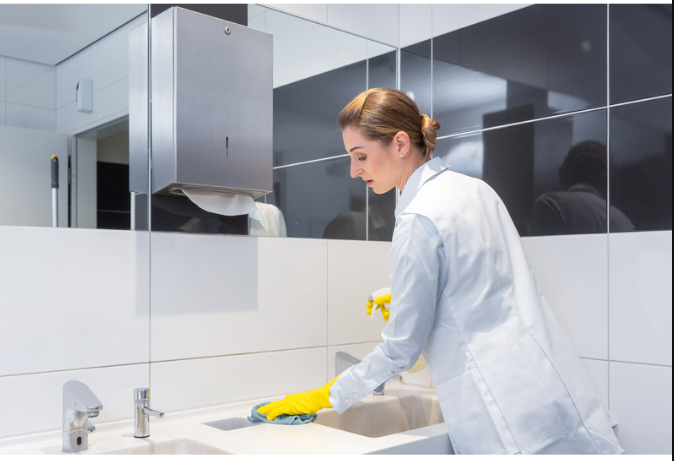Smart washroom system, a unique technology that measures water usage and collects various other data in sensor taps etc, is transforming cleanliness and hygiene. Smart restroom systems are a creative way to handle these vital areas making use of cutting-edge technologies. These solutions provide real-time monitoring and insights by combining sensors, IoT connectivity, and data analytics, guaranteeing peak performance and user and facility manager satisfaction.
Overview of Smart Washroom Systems
In terms of bathroom management, smart washroom solutions are a major advancement. These systems use a mix of sensors and Internet of Things devices to continuously monitor several areas of restroom operations. Facility managers may use the useful data that smart restroom systems give to make well-informed choices regarding maintenance and resource allocation, from occupancy and cleanliness to consumable levels like soap and toilet paper.
Key Features of Smart Washroom Systems
Real-Time Monitoring
Real-time monitoring of several elements is crucial to smart restroom systems. Sensors are used to monitor consumable levels, hygiene, and occupancy. Facility managers can react swiftly to any problems thanks to this continuous flow of data, guaranteeing that bathrooms are always supplied, clean, and available for use.
Data-Driven Insights
Smart restroom systems gather data that is analyzed to find trends and usage patterns. By enabling predictive maintenance scheduling and inventory management, this data lowers operating costs and the chance of running out of necessary supplies. For instance, facility managers might plan additional cleanings to uphold hygienic standards if the data indicates an increase in usage during particular periods.
User Experience Enhancement
The user is the primary focus of the design of smart restroom systems. By features like automatic notifications and occupancy indications wait times are decreased and the entire experience is improved b. For example, occupancy sensors may show users which stalls are available, avoiding congestion and guaranteeing a more enjoyable experience. Furthermore, computerized notifications can inform cleaning personnel when a restroom requires maintenance, preserving hygienic conditions.
Environmental Impact
An important factor in contemporary restroom management is sustainability. Water-saving features like leak monitoring systems and waterless urinals are a common feature of smart restroom solutions. These characteristics support environmental initiatives and lessen water usage. Smart restroom systems optimize resource use, which not only reduces costs but also encourages environmentally beneficial behavior.
Benefits of Implementing Smart Washroom Systems
Operational Efficiency
The improved operating efficiency of smart restroom systems is one of its main advantages. Cleaning crews may concentrate on high-traffic areas using real-time data when monitoring activities are automated, which eliminates the need for manual inspections. This focused strategy guarantees that bathrooms are kept in optimal condition and that resources are used effectively.
Cost Reduction
Significant cost reductions are another benefit of smart restroom systems. Facilities may save maintenance costs by making the most use of their resources and preventing equipment failures with early notifications. By scheduling proactive maintenance based on data insights, problems are dealt with before they become serious ones, which further lowers costs.
Improved Hygiene Standards
Maintaining high standards of cleanliness via ongoing monitoring efficiently addresses public health issues. In order to keep dirt and germs from building up, smart bathroom systems make sure that restrooms are cleaned and refilled as needed. In high-traffic areas, where cleanliness has a direct influence on user happiness and health, this emphasis on hygiene is especially crucial.
Customizable Dashboards
Dashboards may be tailored by facility managers to display data in ways that best meet their operating requirements. This adaptability facilitates decision-making by giving managers instant access to the data they require to maintain efficient toilet operations. Additionally, managers may monitor key performance metrics and assess the success of their maintenance plans via customizable dashboards.
Scalability
Due to their great scalability, smart restroom technologies may be used in a variety of settings, including big retail centers and tiny workplaces. Smart bathroom systems are easily scalable to meet unique demands, whether they are managing a single restroom or several facilities spread across several sites. The benefits of smart restroom management are accessible to companies of all sizes because to its scalability.
Future Trends in Smart Washroom Systems
AI and Predictive Maintenance
Predictive maintenance is about to undergo a revolution because to developments in machine learning and artificial intelligence (AI). AI can forecast when maintenance is required by evaluating data from smart restroom systems, which minimizes downtime and avoids equipment breakdowns. By taking this proactive measure, bathrooms are kept clean and functional.
Personalization of the User
Users will have more personalization options with future smart restroom systems. Customized settings and preferences can improve the user experience and make using the restroom more pleasant and convenient. Depending on their preferences, customers may be able to change the temperature, illumination, or even select particular cleaning cycles.
Sustainability
Eco-friendly elements will continue to be included into smart restroom systems as sustainability gains importance. Environmentally friendly materials, energy-efficient lighting, and water-saving devices will become commonplace. In addition to lessening their negative effects on the environment, these sustainable practices support corporate social responsibility objectives.
Touchless Technology
Touchless technology use is anticipated to increase due to user convenience and hygienic concerns. Touchless flush systems, soap dispensers, and faucets improve user pleasure while lowering the chance of germ transmission. The increasing usage of touchless technology will make toilets safer and easier to use.
Takeaway
An important development in bathroom management is the use of smart washroom systems. These systems increase operational efficiency, boost customer happiness, and promote sustainability by incorporating technology into daily operations. The use of intelligent technologies in public facilities will become more crucial as urbanization increases in order to preserve operational efficiency and hygiene.
Contact us at innovate@quotients.com to schedule a consultation and explore the transformative potential of this innovative technology.






